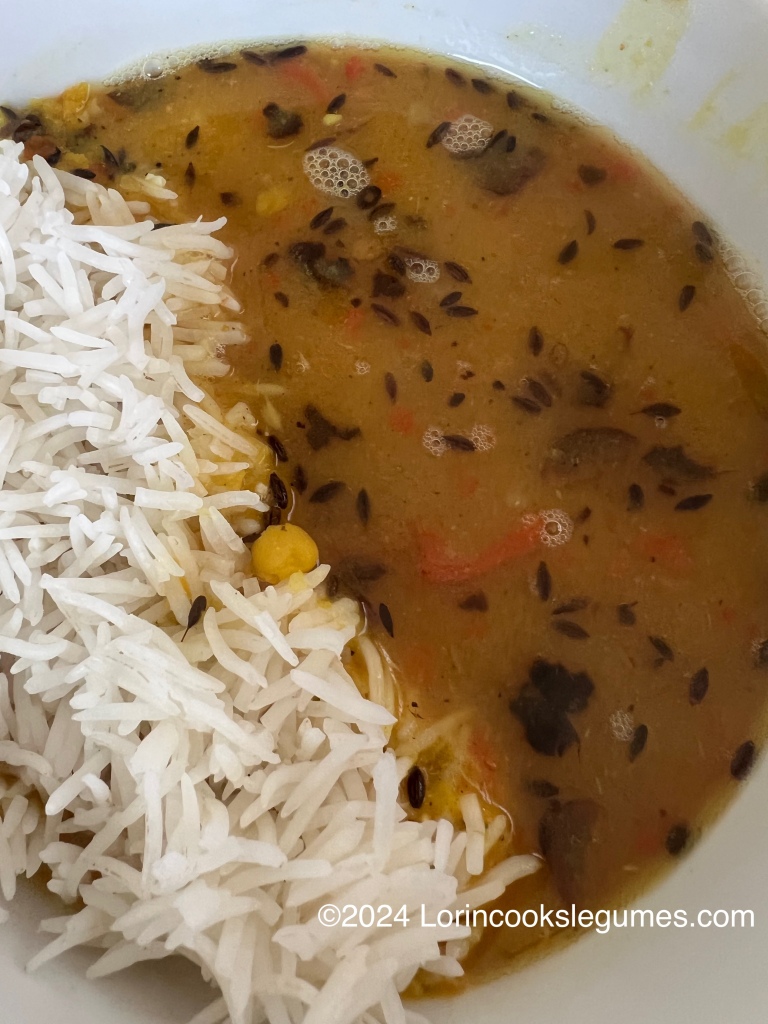
Yellow split peas are very prevalent in the Indian communities of Guyana, Fiji, Suriname, Jamaica, South Africa, Mauritius, Trinidad and Tobago, and are popular amongst Indians in the United States as well as India. There, it is referred to generically as dal and is the most popular dal. It is prepared similarly to dals found in India, but may be used in recipes.
https://en.wikipedia.org/wiki/Dal#Common_ingredients
Trinidadian? Trini? Ironically, when I searched for Trinidadian dhal, most of the results came back as “Trini”, but when I searched for Trini dhal, many of them came back with Trinidadian, so I guess both work.
I think this will be the last of my split pea dahl recipes. I could go looking for American and Indian versions to round out the list, but I don’t foresee either of those searches returning anything particularly new and exciting.
The Republic of Trinidad and Tobago is the southernmost Island nation in the Caribbean, just 6.8 miles off the coast of Venezuela. Its European colonial history goes back to 1498 and Christopher Columbus. Under Spanish rule for three centuries, it was ceded to Great Britain in 1802. Of course the story of how we have significant Indo-Trinidadian/Tobagoan populations today is similar to all the other countries we’ve looked at recently. Great Britain abolished slavery in the 1830s, and many of the freed African slaves refused to work on the sugar plantations, so indentured workers were brought in from India.
Back when I started this little dahl-in-the-diaspora voyage, with my Guyanese dahl recipe, I commented on how it was obviously the recipe of poor workers halfway around the world from their home country. I wouldn’t have thought it was possible to get much more stripped down to the basic essence of dahl than that, but this recipe manages to do it. Overall they are pretty similar, split peas cooked with a few spices and tempered with cumin and garlic that’s fried until nearly burnt, but this version narrows the spices down even further to just cumin, turmeric and black pepper. It also eliminates the tomato, although it adds more peppers than the Guyanese version. It’s also quite watery- definitely the soupiest dhal I’ve made yet.
Speaking of peppers, I used both Scotch bonnet and Trinidadian pimento peppers. My research on the pimento peppers says that they have the flavor of super hot peppers, like Scotch bonnet, without the heat. They aren’t the same as the pimento pepper used to stuff green olives. Of course I cut my Scotch bonnet first, and didn’t wash my knife before chopping the pimento, so the sliver I tasted was rather spicy, and I’m not sure how much of that was the pepper and how much was cross contamination. The finished dhal is significantly less spicy than I was expecting, and mostly tastes like fried garlic to me.
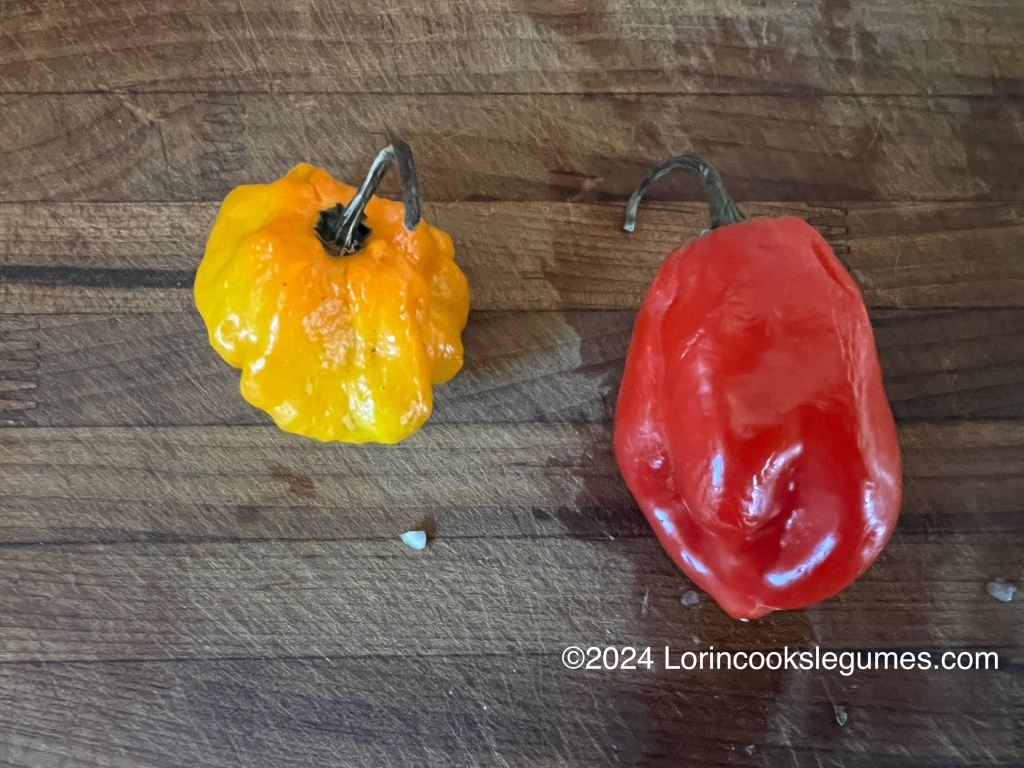
I did learn a new trick for hot peppers while researching this recipe. One post suggested having some vinegar handy to wipe down your cutting board, knife and hands after chopping the hot pepper. I can’t say it completely removed the capsaicin oil (my eyes definitely stung when I rubbed them at least half an hour after chopping the peppers), but I think it did help neutralize a good bit of it.
I’ve mentioned in the past that I usually can’t find Scotch bonnets here in Duluth, and have just used habanero instead. This time, since I was also looking for the pimentos, I ordered both peppers from Produce City Market* in Florida. They advertised about ten to twelve peppers per pack, and I think I received about 16 of each, in various stages of ripeness. Of course, I only needed one or two peppers, so I froze the rest of them. My one criticism is that they didn’t use any kind of insulated packaging, and in fact the box had some air holes in it . Luckily my wife was home when the package arrived, because it was below freezing here in Duluth that day. (Yes, I know I just said I froze the extra peppers. Had I come home to find them frozen I would have put them in the freezer. It’s freezing and thawing that will turn them to mush. That said, I ordered fresh peppers so I would have been pretty upset).
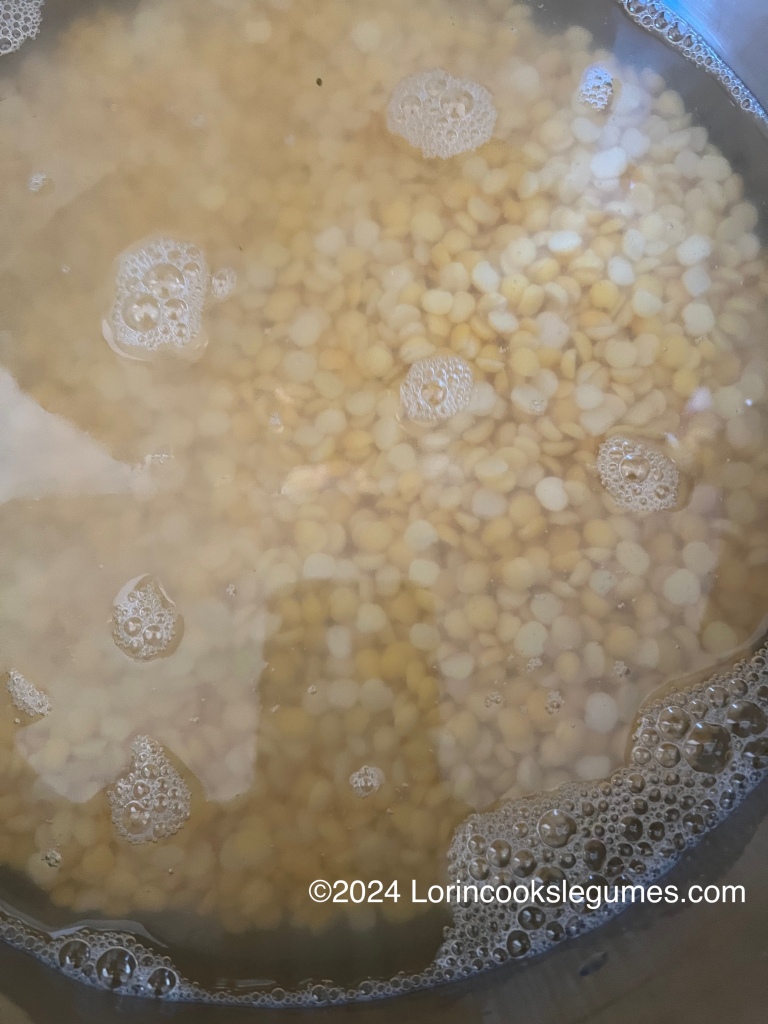
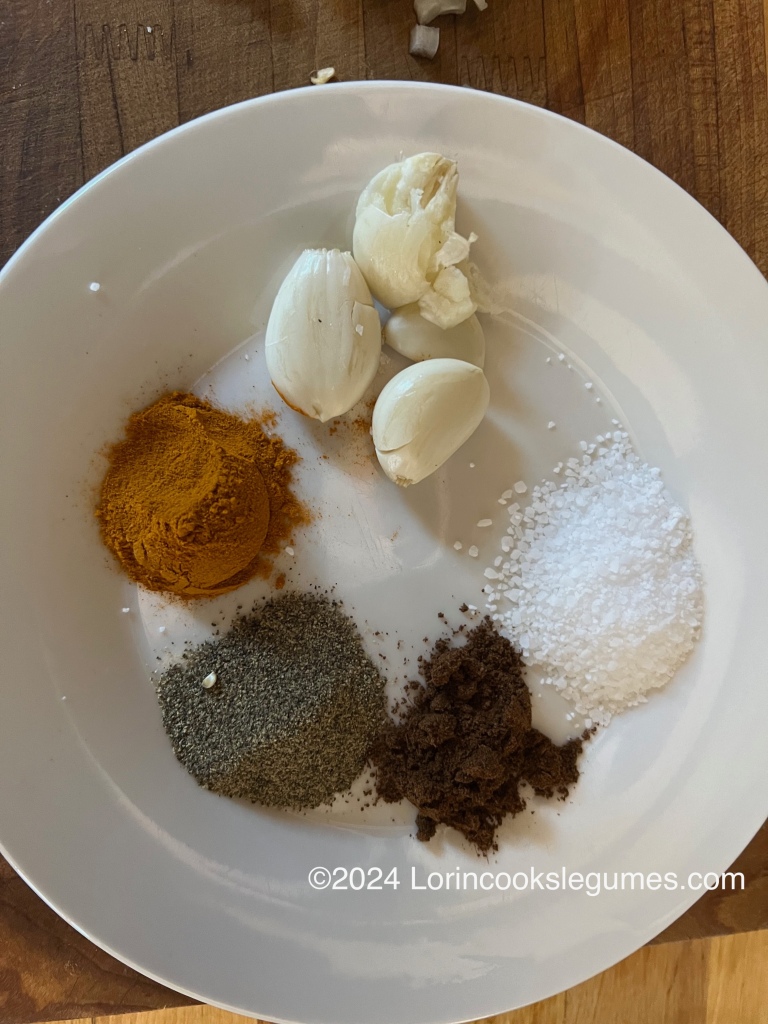
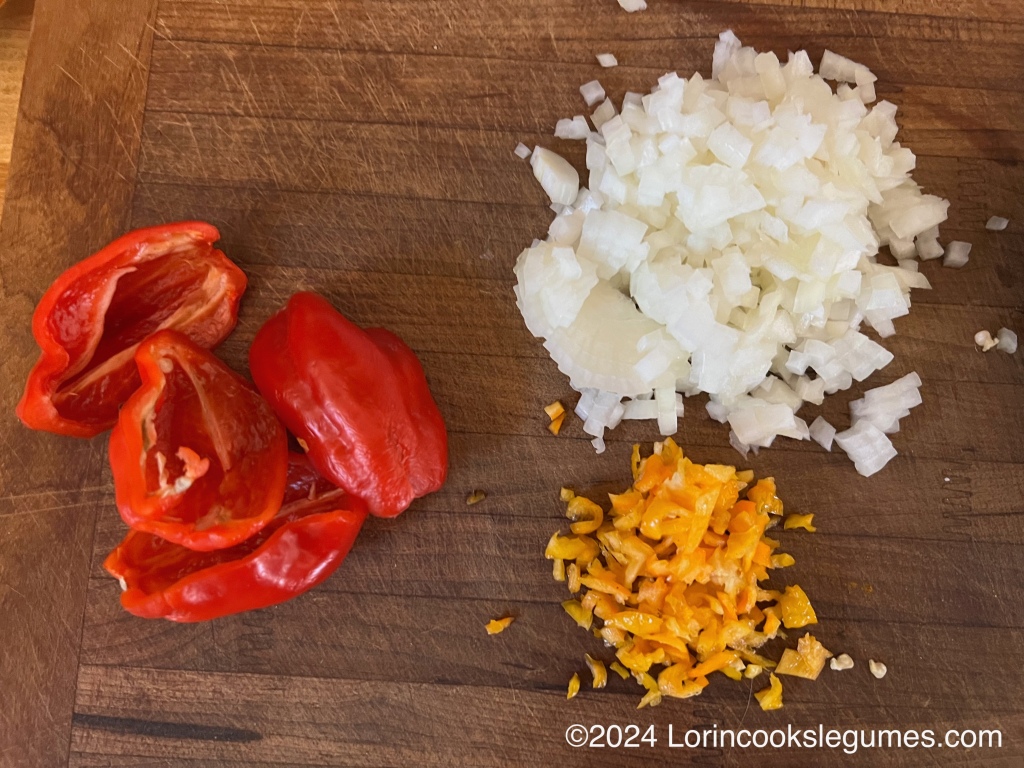
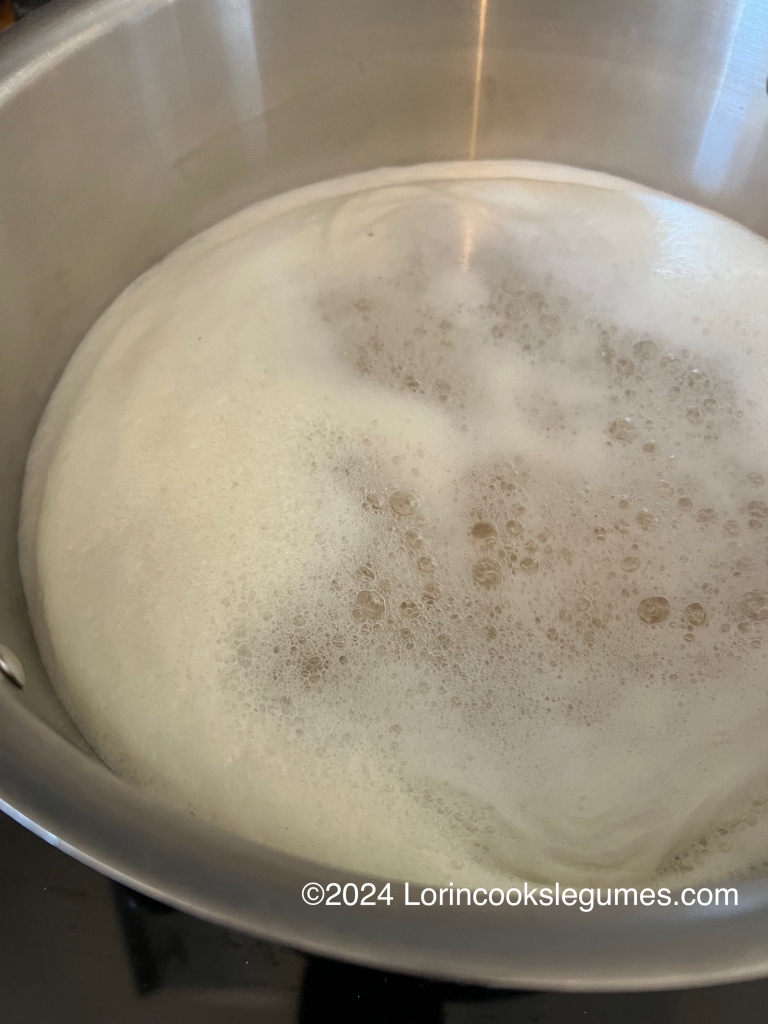
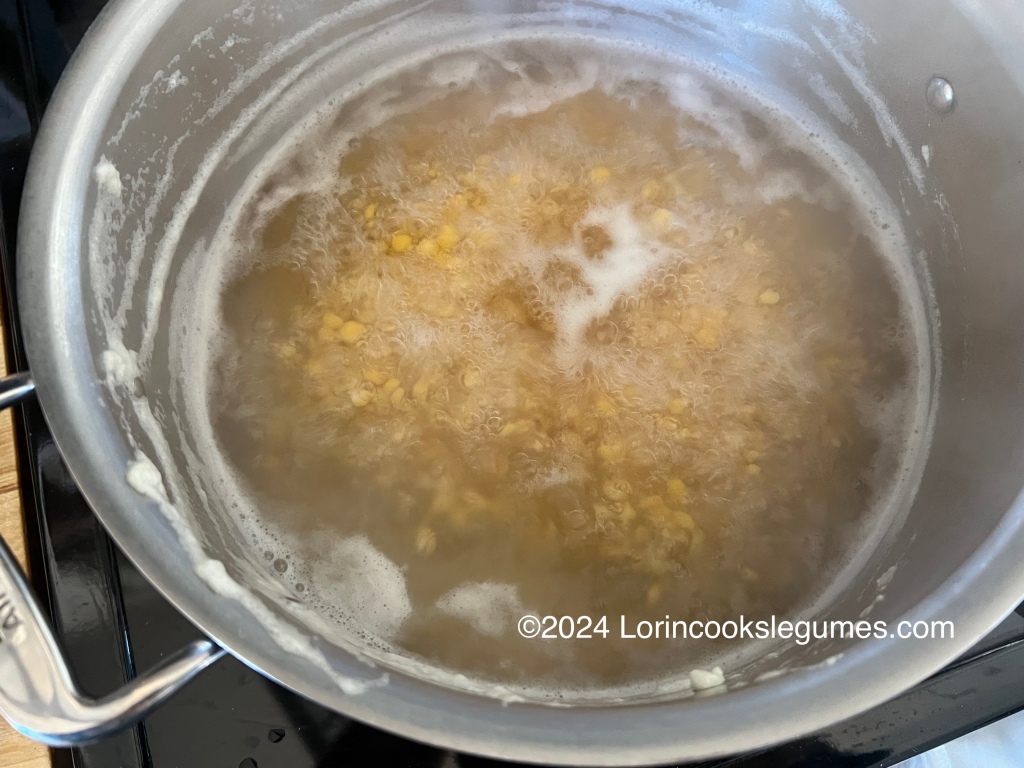

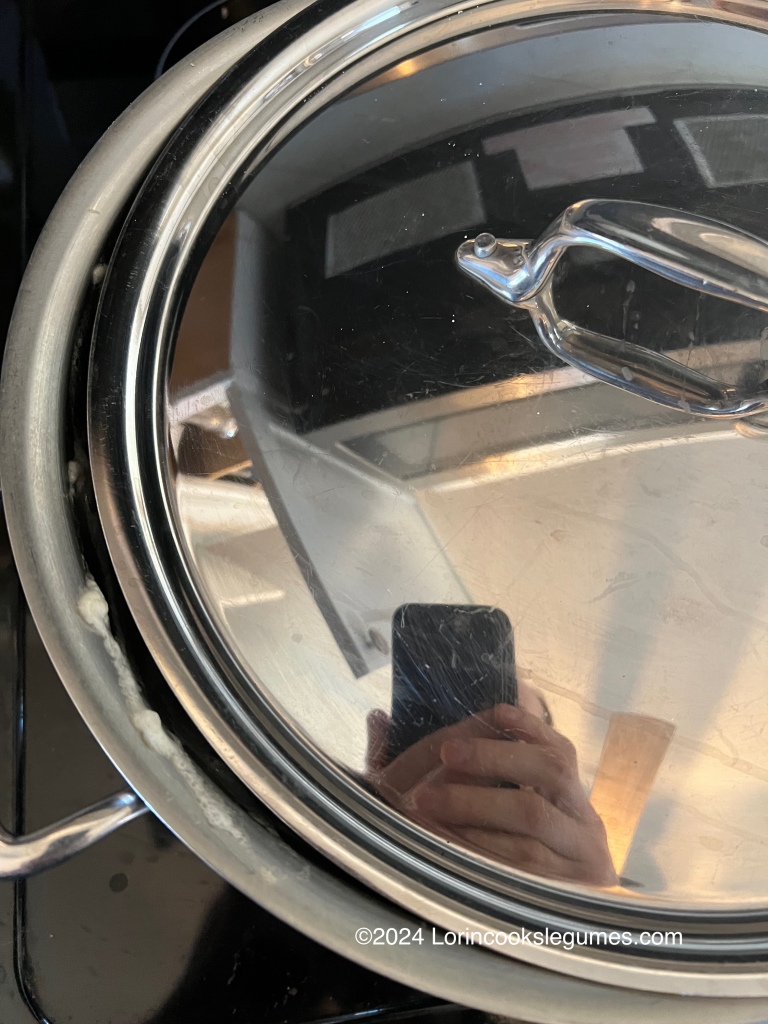
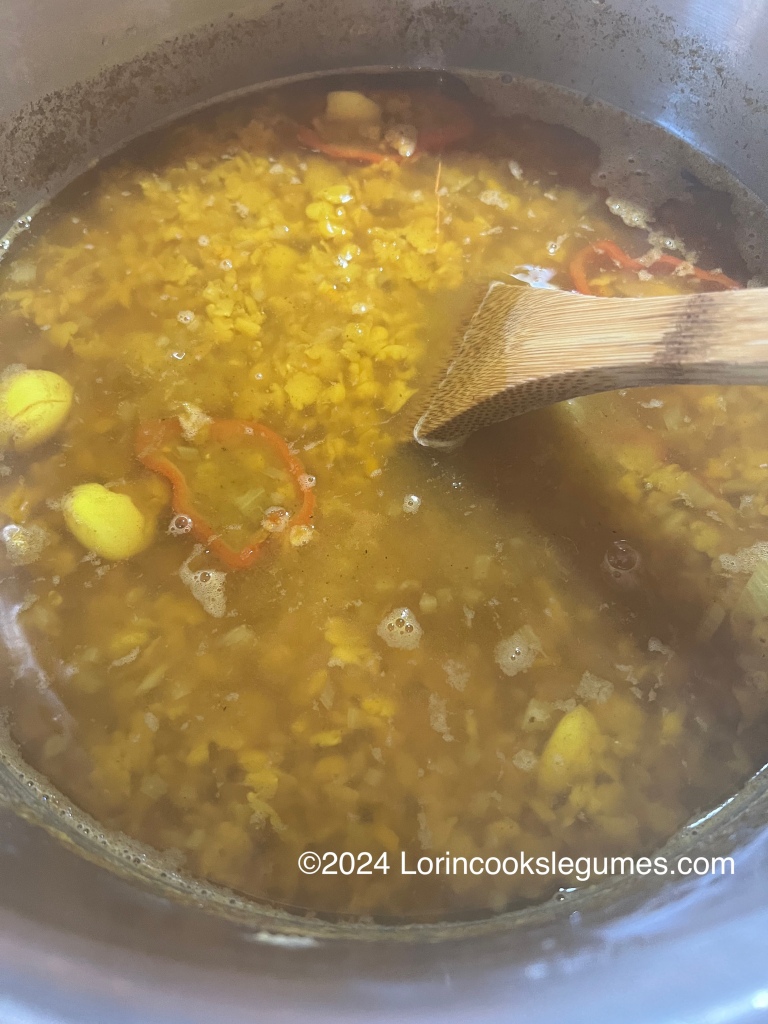

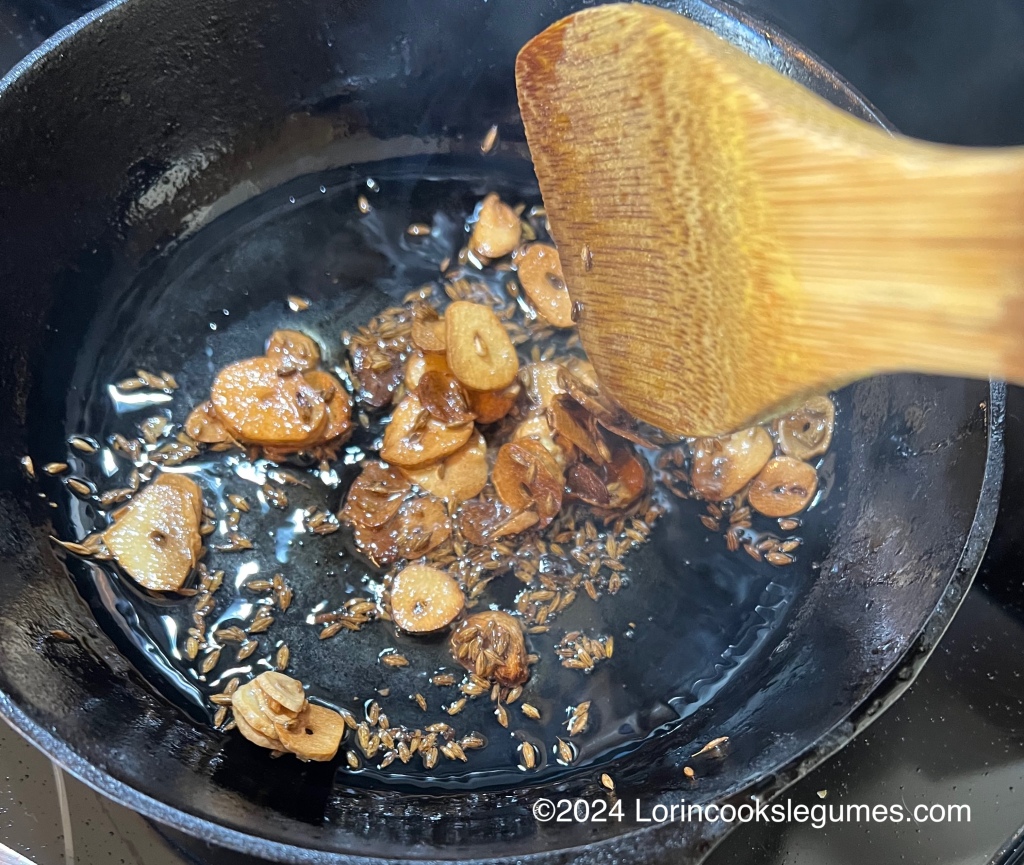
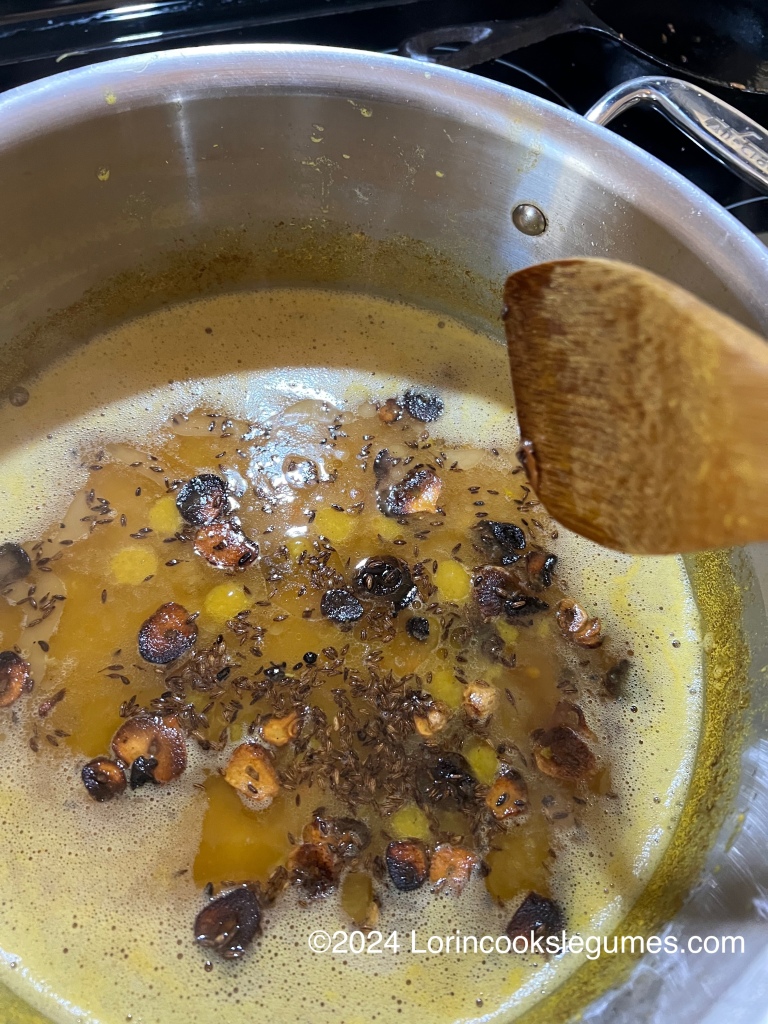
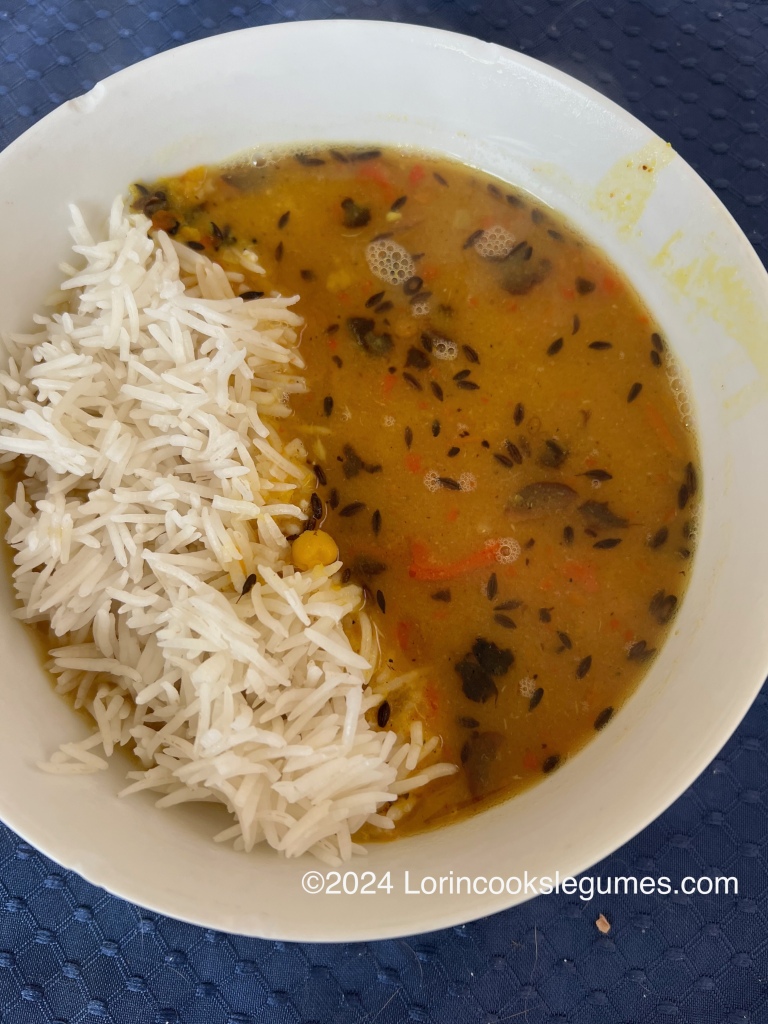
Trinidadian Dhal
Yield: 4-5 main dish serving or 8-10 side servings
Prep: 20 minutes
Cook: 1 hour
Total: ~1:20 plus soaking time.
(As an Amazon Associate I earn from qualifying purchases.)
1 ¾ cups yellow split peas
7 cups water
1 ¼ teaspoon salt
¾ teaspoon geera (ground cumin)
⅔ teaspoon black pepper
1 ⅛ teaspoon turmeric
4 cloves garlic, smashed.
½ cup onion, minced
2 ½ teaspoons Scotch bonnet pepper, seeded and minced (about 1 pepper)
3 pimento peppers, seeded
2 Tablespoons vegetable oil
OR
2 Tablespoons olive oil
1 ¼ teaspoon whole cumin seed
3 cloves garlic, sliced
Optional:
⅔ teaspoon salt, additional, added at the end.
⅜ cup culantro, finely chopped
2 Tablespoons coconut oil, in place of vegetable or olive.
Caribbean pepper sauce, to taste
Pick over the split peas, removing any bad peas or foreign objects. Rinse in several changes of water, drain, and cover with cool water. Leave to soak for several hours or overnight.
Drain the peas and add them to a pot with 7 cups of water. Bring to a boil, skimming off any scum that rises to the surface.
Once the peas are boiling and no more scum is rising, add salt, geera, black pepper, turmeric, 4 cloves of crushed garlic, onion, and peppers. Reduce heat to a simmer and cover, leaving lid slightly ajar to prevent boil over. Simmer for 45 minutes to an hour, until peas are very soft and breaking down. Remove from heat and use a hand blender, whisk, or swizzle stick to blend everything to a smooth puree. Add additional water if needed to reach your desired consistency, or simmer more of it is too thin. (Dhal will continue to thicken as it cools, so it should be somewhat thinner than desired at this point.)
Heat oil in a small frying pan or metal ladle. Add cumin seed and sliced garlic and fry until garlic is dark golden brown. Carefully pour into the dhal, using the lid as a shield against splattering oil. Stir will, cover and allow to rest for 5 minutes for flavors to bloom. Taste for salt and serve with rice, roti, or your favorite Caribbean dishes.
*As an Amazon Associate I earn from qualifying Amazon purchases.
I receive no compensation for mentioning any other websites or product.